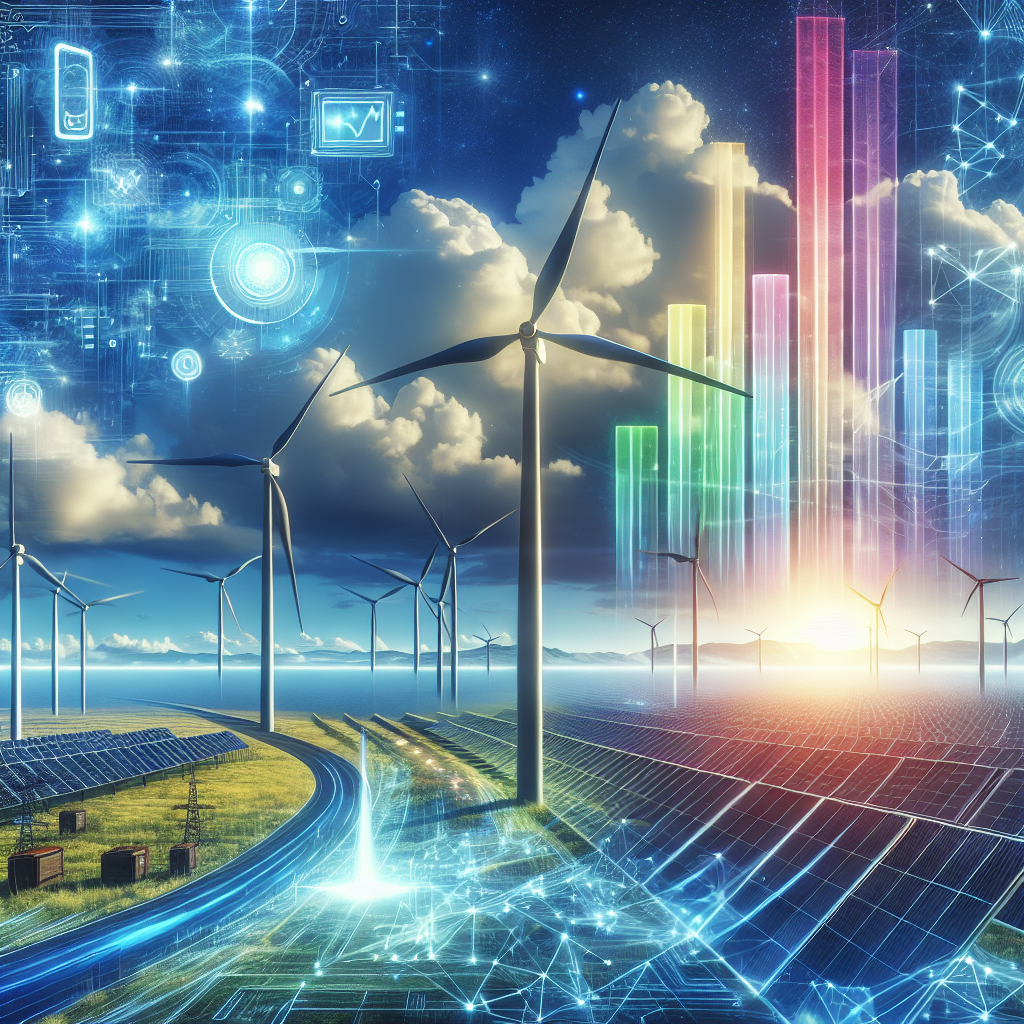In recent years, there has been a growing interest in using artificial intelligence (AI) to drive innovations in renewable energy production. AI technologies have the potential to revolutionize the way we generate and distribute renewable energy, making it more efficient, cost-effective, and sustainable.
One of the key areas where AI is making a significant impact in renewable energy production is in the optimization of energy systems. AI algorithms can analyze vast amounts of data from renewable energy sources such as solar panels and wind turbines to optimize their performance and maximize energy output. By using AI to predict weather patterns and energy demand, renewable energy systems can be more effectively integrated into the grid, reducing waste and increasing overall efficiency.
Another way AI is driving innovation in renewable energy production is through the development of smart grids. Smart grids use AI algorithms to monitor and control energy distribution in real-time, allowing for more efficient and reliable delivery of renewable energy to consumers. By using AI to analyze data from sensors and smart meters, smart grids can detect and respond to fluctuations in energy supply and demand, helping to balance the grid and reduce the risk of blackouts.
AI is also being used to improve the design and operation of renewable energy systems. By using AI algorithms to simulate and optimize the performance of solar panels, wind turbines, and other renewable energy technologies, researchers and engineers can develop more efficient and cost-effective systems. AI can also be used to identify potential maintenance issues in renewable energy systems, allowing for proactive maintenance and increased system reliability.
In addition to optimizing renewable energy production, AI is also being used to accelerate the development of new renewable energy technologies. By using AI algorithms to analyze large datasets and simulate complex systems, researchers can identify new materials, designs, and processes that can improve the efficiency and performance of renewable energy technologies. AI-driven simulations can also help to reduce the time and cost of testing new technologies, allowing for faster innovation and deployment of renewable energy solutions.
Overall, AI-driven innovations in renewable energy production have the potential to transform the way we generate and distribute energy, making it more sustainable, reliable, and affordable. By harnessing the power of AI, we can unlock new possibilities for renewable energy production and accelerate the transition to a clean energy future.
FAQs:
Q: How is AI being used to optimize renewable energy production?
A: AI algorithms can analyze data from renewable energy sources to optimize their performance and maximize energy output. By predicting weather patterns and energy demand, AI can help integrate renewable energy systems into the grid more effectively.
Q: What are smart grids and how does AI play a role in their development?
A: Smart grids use AI algorithms to monitor and control energy distribution in real-time, allowing for more efficient and reliable delivery of renewable energy. AI helps balance the grid and reduce the risk of blackouts by analyzing data from sensors and smart meters.
Q: How is AI improving the design and operation of renewable energy systems?
A: AI algorithms are used to simulate and optimize the performance of renewable energy technologies, such as solar panels and wind turbines. AI can also identify potential maintenance issues, allowing for proactive maintenance and increased system reliability.
Q: How is AI accelerating the development of new renewable energy technologies?
A: AI is being used to analyze large datasets and simulate complex systems to identify new materials, designs, and processes that can improve the efficiency and performance of renewable energy technologies. AI-driven simulations help reduce the time and cost of testing new technologies, speeding up innovation and deployment.

